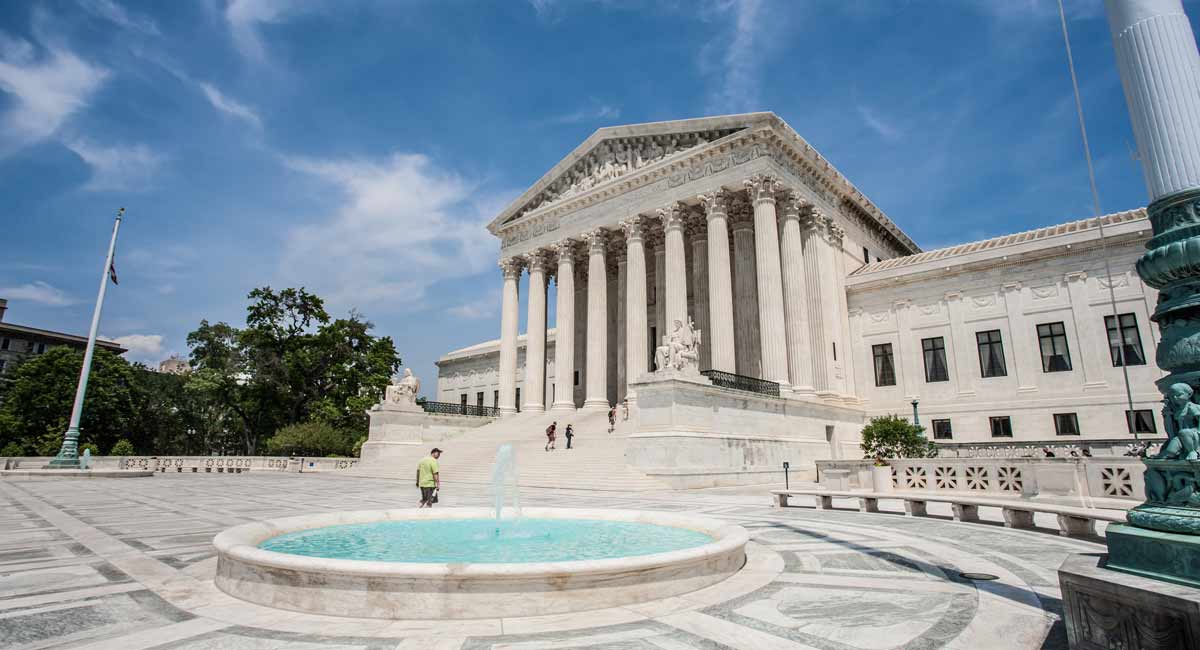The Supreme Court’s 1973 Roe v. Wade decision and its equally controversial companion case, Doe v. Bolton, created a public health vacuum, the impact of which is still felt today.
Attorney Clarke D. Forsythe’s 2013 book, “Abuse of Discretion: The Inside Story of Roe v. Wade,” details how the Justices’ unfounded assumptions about abortion not only led to the legal dehumanization of the preborn but also helped create today’s abusive, unaccountable abortion industry.
Medical Assumptions
According to Forsythe, the Roe and Doe decisions relied heavily on the Justices’ mistaken idea that abortion was somehow safer than childbirth when, even today, the lack of reporting surrounding abortion complications raises questions about the health hazards surrounding it.
Still, this falsehood was a major factor in allowing for abortion on demand and minimal regulation of abortionists.
“The Justices declared a right to abortion at any time before fetal viability and at any time after viability if the woman’s emotional ‘well-being; – as the Justices broadly defined ‘health’ – was, in the discretion of the abortion provider, at issue,” Forsythe wrote in his book.
“…In effect, the Justices wrote a national abortion statute that gave enormous discretion to abortion providers… and prohibited clinic regulations in the first trimester, when 90 percent of abortions are done,” he wrote.
For many of the Justices’, legalizing abortion meant “freeing up doctors” and deferring to their “medical judgment,” according to Forsythe, as was the case for Justice Harry Blackmun. Blackmun thought abortionists were like his colleagues at the Mayo Clinic in Rochester, Minnesota, and he assumed that, once abortion was legalized, family physicians and hospital doctors would conduct them.
READ: Roe v. Wade granted special privileges to abortionists
Forsythe went on to explain that many of the Justices thought OB-GYNs would commit legalized abortions. The attorney speculated that Sarah Weddington might have influenced this assumption during the first oral arguments for Roe on December 13, 1971, when she claimed:
We have affidavits in the back of our brief from each of the heads of public of heads of obstetrics and gynecology departments from each of our public medical schools in Texas.
And each of them points out that they were willing and interested to immediately begin to formulate methods of providing care and services for women who are pregnant and do not desire to continue the pregnancy.
According to a 2012 survey published in Obstetrics & Gynecology, however, most OB-GYNs refuse to commit abortions. Assessing 1,800 practicing OB-GYNs, the survey found that, while 97% had encountered abortion-minded patients, only 14% of those surveyed at that time were willing to conduct one. And in 2017, the pro-abortion Guttmacher Institute found that 83% of OB-GYNs in private practice do not commit abortions.
In addition, the Justices failed to consider that abortion is not a standard medical procedure, as the vast majority are done for social reasons, not some sort of health-related emergency. It also seems the Justices misunderstood the role an abortionist plays in a pregnancy termination decision.
As Dr. Ingrid Skop, a practicing OB-GYN and American Association of Pro-Life Obstetricians and Gynecologists (AAPLOG) member, noted in Top Ten Myths About Abortion, most abortionists are “merely technicians performing a procedure for money.” Skop also wrote that many abortionists work solely for abortion facilities, with abortion being the only service they provide.
Contrary to the Justices’ image of a doctor counseling a woman to abort her pregnancy based on some sort of medical judgment, an abortionist may never even speak with the woman. In reality, he or she is merely there to carry out the abortion and collect the payment.
Roe’s Unintended Health Consequences
Citing Justice William Rehnquist’s dissent, Forsythe elaborated on how Roe left public health officials and lawyers throughout the country struggling to interpret the Justice’s decision and what it meant for regulating abortion facilities.
“Justice Rehnquist’s prediction in dissent was immediately apparent: ‘[T]he Court’s opinion will accomplish the seemingly impossible feat of leaving this area of the law more confused than it found it.’ The Justices swept away existing abortion regulations but did not give clear guidance as to what regulations would be acceptable,” Forsythe wrote.
Despite concerns about women dying from back alley abortions, Forsythe noted “the Justices gave ‘back alley abortionists’ – as long as they had an M.D. – as much right as any other doctor to go into court and challenge medical regulations.”
As a result, many criminal abortionists merely began conducting their operations out in the open. And by treating abortion as a “constitutional right,” these dangerous abortionists were rendered immune from public oversight, according to Forsythe.
The impact of the Justices’ sweeping abortion decision has not faded, however, as Forsythe noted.
“The public health vacuum still threatens women’s health and safety forty years after Roe. The gap has not been filled – despite the mounting evidence of clinic abuses and the mounting medical data about the risks to women – leaving women vulnerable to the physical and psychological risks of abortion, the hazards of some abortion providers, unsafe and unsanitary clinics, and poor information about the long-term risks of abortion,” Forsythe wrote.
The legacy of Roe v. Wade includes the loss of over 60 million lives since the case was decided and the mass exploitation of women’s bodies by an unscrupulous abortion industry. It is time for today’s Supreme Court to take steps to correct this grave injustice by keeping this tragic legacy in mind when ruling on the Dobbs v. Jackson Women’s Health Organization case.
“Like” Live Action News on Facebook for more pro-life news and commentary!







